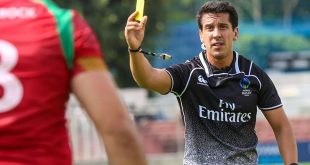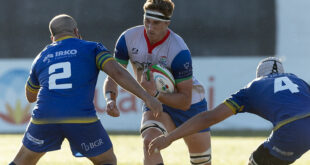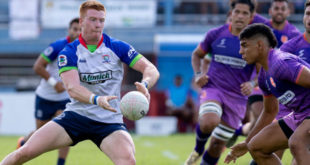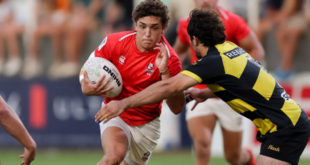Brazil Rugby, the Confederação Brasileira de Rugby (CBRu) has approved a new model for domestic competitions. The restructuring will see a new system of national competitions starting in 2023. The changes are to apply across the board; Men’s, Women’s, and u20’s. In all cases they will be for XV and Rugby Sevens.
The new model involved a detailed study and input in the form of a commission. They will help bridge the gap between amateurism and professionalism.
MENS DOMESTIC RUGBY
Men’s competitions will be played between March and October. New initiatives are to see state / regional competitions taking place alongside national ones. All told, there will be men’s rugby played on 35 weekends of the year. The national competitions will occupy 16 of the 35 weekends.
Changes to the Men’s club competitions see expansion to six regions. The strategy is motivated in large part to spread the game beyond its center of Brazil’s south-east. The national first division, the Super 12, will have three pools of four. They are regionally defined as: (A) Santa Catarina and Rio Grande do Sul; (B) São Paulo and Paraná; (C) Rio de Janeiro, Minas Gerais and São Paulo.
All teams will play six matches in the Super 12. The top two per group will advance to the play-off’s. They will also secure their places in the following year’s Super 12 competition.
The national second division will no longer be the Taça Tupi; instead, it is to be replaced by three regional competitions. It will consist of four teams per group, giving each participant three matches. Clubs will qualify for the competition via results from within their respective regions.
The identified regions for the second division are: (A) Taça RS-SC (clubs from Rio Grande do Sul and Santa Catarina); (B) Taça PR-SP (clubs from Paraná and São Paulo); (C) Taça RJ-MG (clubs from Rio de Janeiro and Minas Gerais.
Clubs will have the opportunity to qualify for the following year’s Super 12. This will come in the form of the bottom two per region from the Super 12 facing the top two per region of the second division. The strategy will enable the national competition to involve participants from a greater geographical area and have all participants earn the right to compete.
The Brazilian Cup or Copa do Brasil will be structured according to an elimination model. It will involve the regional champions and state champions. For 2023 it will be as follows:
Quarter Final 1 Minas Gerais champion vs Brazil Mid-West / North Champion
Quarter Final 2 Rio de Janeiro champion vs Bahia* / Northeast champion
Quarter Final 3 São Paulo champion vs Santa Catarina champion
Quarter Final 4 Paraná champion vs Rio Grande do Sul champion
* Bahia will also include participants from the states of Espirito Santo and Sergipe.
The quarter finals will be followed by semi finals and a national final.
A further new initiative for Men’s competition is the Copa de Campões. The Brazilian Champions Cup will begin in 2024. It will be a special fixture between the winners of the Copa do Brasil and the Super 12.
Restructuring has also green-lighted the creation of a Trofeu Desafio. It is to be Brazil’s equivalent of New Zealand’s Ranfurly Shield. The home side will put the trophy on the line for all home matches. If the away team wins the match it takes the trophy home.
REGIONAL REPRESENTIVE TEAMS
An additional change sees the creation of regional representative teams. This is for both senior and junior levels. The national Brazilian league will consist of four teams: (A) São Paulo; (B), Southern states; (C) Barbarians (players from the remainder of Brazil); (D) Cobras u20’s.
The four teams will meet in a series of matches. They will be followed by Semi Finals and a Final.
NATIONAL JUNIOR CHAMPIONSHIP
There will be a national junior championship. It will serve the purposes of u18s and u21s in 2023. It will be changed for 2024 to be u17 and u19. It is to contain nine teams divided into three groups of three. The regions are to be: (A) Rio Grande do Sul, Santa Catarina and Paraná; (B) São Paulo’s Vale do Paráiba, Rio de Janeiro, Minas Gerais and Bahia; (C) São Paulo city, mainland São Paulo and Mid-Western Brazil.
SEVENS
Rugby Sevens will be played in November and December. The Brazil Sevens will be a 16 team tournament. Placings will be proportionally defined per federation or region depending on their number of clubs.
WOMEN’S DOMESTIC RUGBY
Women’s domestic rugby will be structured in two slots. The first of March to June will be XV and the second of June to December will be Sevens. As is the case of Men’s competitions, the regional bodies will have the power to organize additional competitions between March and June if desired.
The Women’s national championship will contain regional teams. This will be the case for both seniors and u20’s. It will change to u19’s in 2024. The structure is to be nine teams competing in three groups of three. They are: (A) Rio Grande do Sul, Santa Catarina, Paraná; (B) São Paulo’s Vale do Paráiba, Rio de Janeiro, Minas Gerais and Bahia; (C) São Paulo city, mainland São Paulo and Mid-Western Brazil.
 Americas Rugby News Rugby news from across the Americas!
Americas Rugby News Rugby news from across the Americas!




